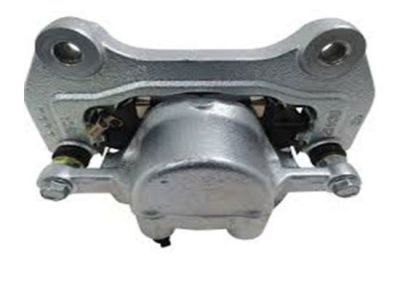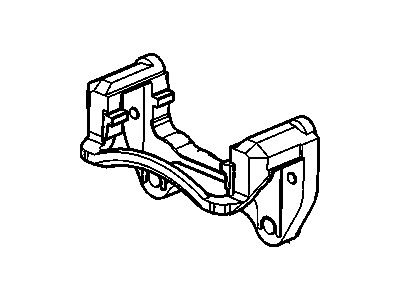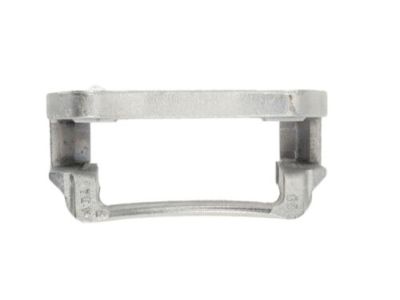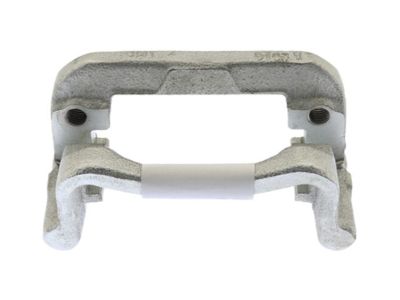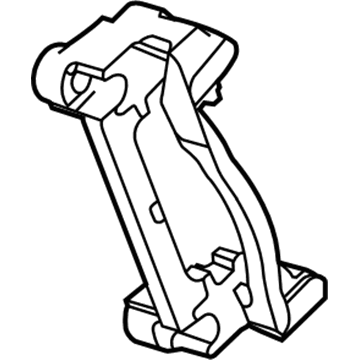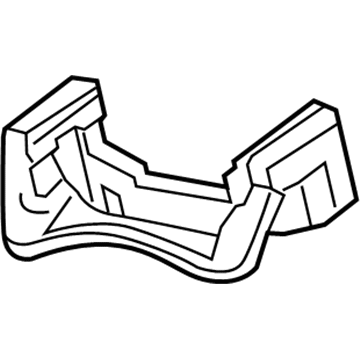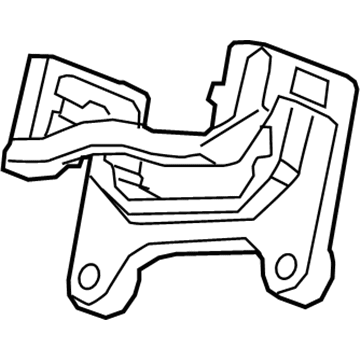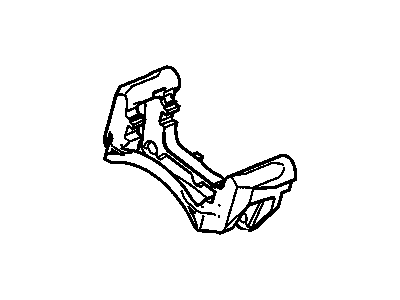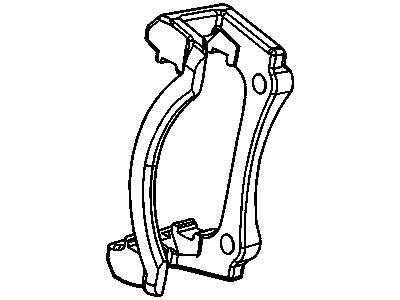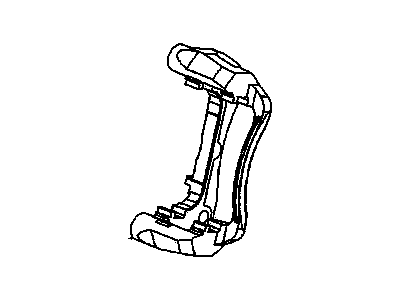
My Garage
My Account
Cart
Genuine Chevrolet Malibu Brake Caliper Bracket
Caliper Bracket- Select Vehicle by Model
- Select Vehicle by VIN
Select Vehicle by Model
orMake
Model
Year
Select Vehicle by VIN
For the most accurate results, select vehicle by your VIN (Vehicle Identification Number).
18 Brake Caliper Brackets found
Chevrolet Malibu Bracket, Front Brake Caliper
Part Number: 13279658$100.65 MSRP: $196.20You Save: $95.55 (49%)Ships in 1-2 Business DaysChevrolet Malibu Bracket, Front Brake Caliper
Part Number: 13588988$30.09 MSRP: $54.69You Save: $24.60 (45%)Ships in 1-2 Business DaysChevrolet Malibu Bracket Kit,Rear Brake Caliper
Part Number: 13578099$146.65 MSRP: $260.70You Save: $114.05 (44%)Ships in 1-2 Business DaysChevrolet Malibu Bracket Kit,Rear Brake Caliper
Part Number: 13578101$255.19 MSRP: $704.54You Save: $449.35 (64%)Ships in 1-2 Business DaysChevrolet Malibu Bracket, Front Brake Caliper
Part Number: 13279657$62.62 MSRP: $113.86You Save: $51.24 (45%)Ships in 1-2 Business DaysChevrolet Malibu Bracket Kit, Rear Brake Caliper
Part Number: 13595924$59.20 MSRP: $97.97You Save: $38.77 (40%)Ships in 1-3 Business DaysChevrolet Malibu Bracket Kit, Rear Brake Caliper
Part Number: 13595925$61.41 MSRP: $97.94You Save: $36.53 (38%)Ships in 1-3 Business DaysChevrolet Malibu Bracket Kit, Rear Brk Clpr
Part Number: 13533568$57.94 MSRP: $92.41You Save: $34.47 (38%)Ships in 1-3 Business DaysChevrolet Malibu Bracket Kit, Rear Brk Clpr
Part Number: 13533567$59.39 MSRP: $94.72You Save: $35.33 (38%)Ships in 1-3 Business DaysChevrolet Malibu Bracket, Rear Brake Caliper
Part Number: 13596007$32.38 MSRP: $58.88You Save: $26.50 (46%)Ships in 1-2 Business DaysChevrolet Malibu Bracket,Front Brake Caliper
Part Number: 22705376$70.96 MSRP: $124.50You Save: $53.54 (43%)Ships in 1-2 Business DaysChevrolet Malibu Bracket,Front Brake Caliper
Part Number: 22705377$73.57 MSRP: $115.75You Save: $42.18 (37%)Ships in 1-3 Business Days
Chevrolet Malibu Brake Caliper Bracket
In Chevrolet Malibu the Brake Caliper Bracket plays an important role in delivering the braking system in the vehicle. Its main purpose is to hold on the brake pads so that they do not shift when they are applying force on the brake rotors. This stability is vital so as to get enough braking force, and amply brings out its significance in our opinion. Chevrolet Malibu have implemented different types of the Brake Caliper Bracket over the years and all these types are aimed at the improvement of the braking systems. Although the goal is quite similar, certain variations can be observed during the work, it can be in the choice of materials or certain characteristics of the design, which ultimately influences the speed and strength of the structure. On this basis, details of these variations would be useful for Chevrotle Malibu cars' braking system's maintenance.
Each OEM Chevrolet Malibu Brake Caliper Bracket we offer is competitively priced and comes with the assurance of the manufacturer's warranty for the part. Furthermore, we guarantee the speedy delivery of your orders right to your doorstep. Our hassle-free return policy is also in place for your peace of mind.
Chevrolet Malibu Brake Caliper Bracket Parts Questions & Experts Answers
- Q: Should Brake Caliper Bracket and Brake Calipers be replaced rather than overhauled if there is fluid leakage or damage to a piston boot on Chevrolet Malibu?A:If replacement is indicated due to fluid leakage or damage to a piston boot, it is recommended that the calipers be replaced rather than overhauled, as new and factory rebuilt units are available on an exchange basis, making the job easier. Always replace calipers in pairs and avoid replacing just one. When removing a caliper to access another component, do not disconnect the brake hose or Parking Brake Cable on rear calipers. Begin by loosening the wheel lug nuts, raising the vehicle, and securely supporting it on jackstands before removing the wheels. For models with an Electronic Parking Brake, place the parking brake actuators in service mode, and for those with parking brake cables, detach the cables from the calipers. Next, remove the banjo fitting bolt and disconnect the brake hose from the caliper, discarding the sealing washers and plugging the hose to prevent contamination and fluid loss. If the caliper is only being removed for access, use wire to hang it securely and avoid letting it hang by the brake hose. To remove the caliper mounting bracket, first take out the Brake Pads, then remove and discard the two caliper bracket mounting bolts, cleaning the mating surfaces and removing any remaining thread locking material. Installation follows the reverse order of removal, using a high-temperature thread locking compound on the fastener threads and installing new caliper mounting bracket bolts, tightening them to the specified torque. Always use new sealing washers when reinstalling the banjo fitting to the caliper. If the brake hose was disconnected, bleed the brake system and ensure there are no leaks from the hose connections, testing the brakes carefully before returning the vehicle to normal service. If work was done on the rear calipers, adjust the parking brake for models with parking brake cables, and enable the parking brake system for those with an Electronic Parking Brake.
Related Chevrolet Malibu Parts
Browse by Year
2024 Brake Caliper Bracket 2023 Brake Caliper Bracket 2022 Brake Caliper Bracket 2021 Brake Caliper Bracket 2020 Brake Caliper Bracket 2019 Brake Caliper Bracket 2018 Brake Caliper Bracket 2017 Brake Caliper Bracket 2016 Brake Caliper Bracket 2015 Brake Caliper Bracket 2014 Brake Caliper Bracket 2013 Brake Caliper Bracket 2012 Brake Caliper Bracket 2011 Brake Caliper Bracket 2010 Brake Caliper Bracket 2009 Brake Caliper Bracket 2008 Brake Caliper Bracket 2007 Brake Caliper Bracket 2006 Brake Caliper Bracket 2005 Brake Caliper Bracket 2004 Brake Caliper Bracket 2003 Brake Caliper Bracket 2002 Brake Caliper Bracket 2001 Brake Caliper Bracket 2000 Brake Caliper Bracket 1999 Brake Caliper Bracket 1998 Brake Caliper Bracket 1997 Brake Caliper Bracket
